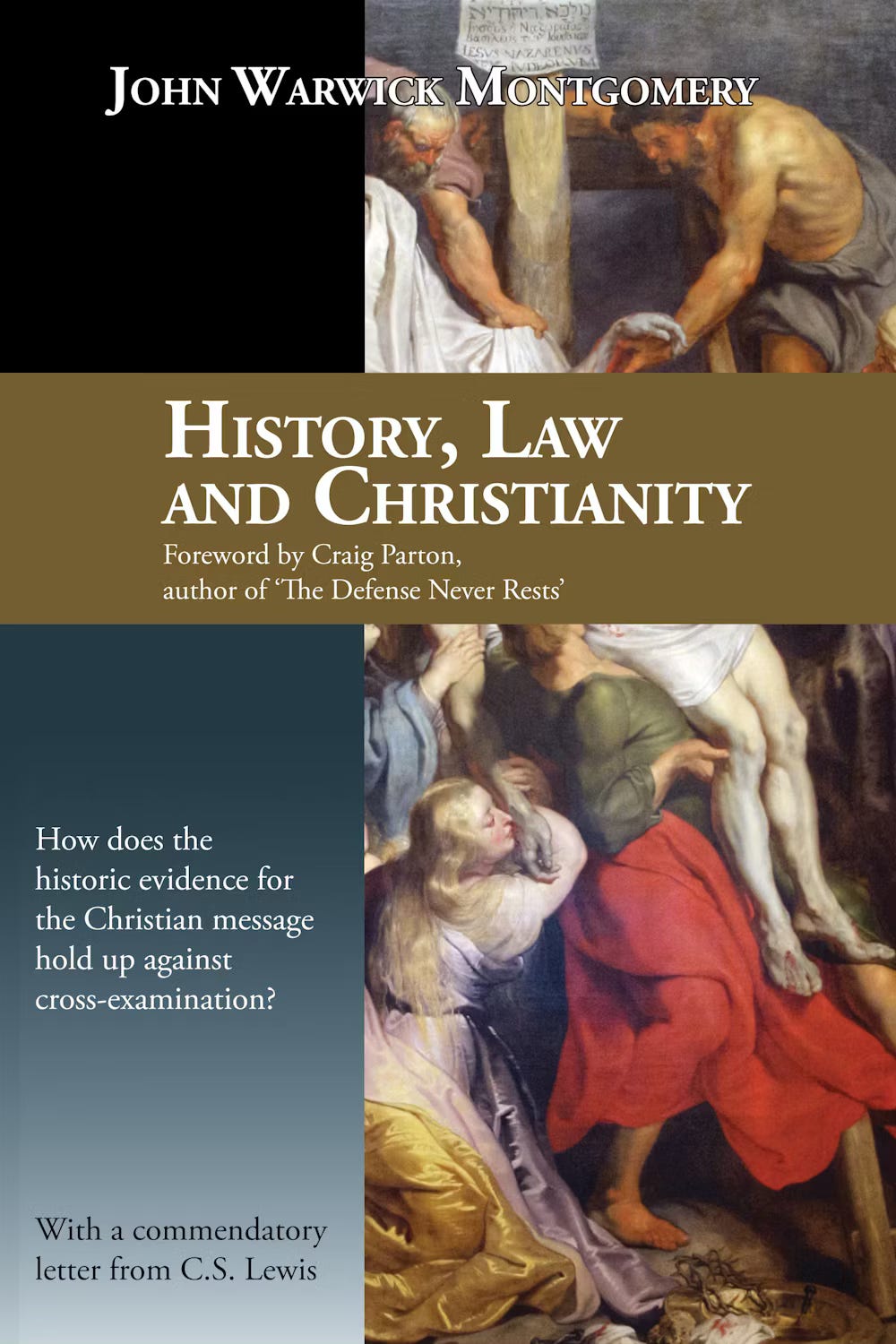In honor of John Warwick Montgomery, who passed away on 9/25/2024. A giant defender of inerrancy and Biblical truths, he inspired many to stand against skepticism and liberal theology without fear or reservation.
Critics of the Bible have attempted to claim that the existence of Jesus is ‘shrouded in mystery’ and beyond hope of confirmation. This argument was made by Avrum Stroll as he was debating famed Christian apologist John Warwick Montgomery. Stroll asserted that there is no evidence for the historical Jesus due to the corruption and exaggeration of the NT. However, Montgomery reminded him that to reject the NT manuscript (MS) tradition, which is wonderfully reliable, consistency would demand the rejection of any knowledge of the ancient world. (This is because the NT has more MS evidence than classical writings, and the same authors within the classical tradition also wrote about Biblical characters and events. More on this below). Stroll, not wanting to give in, declared he would give up all knowledge of the ancient world! At that moment a member from the audience, the chairman of the Classics Department, leaped from his chair and cried, “Good Lord Avrum, not that!”
The Bible is often portrayed in ways that separate it from history. Peter walking on water, Moses crossing the Red Sea, and Elijah on Mount Carmel are viewed merely as stories, but not on the same level as Julius Cæsar, Richard the Lionheart, or George Washington. However, this should not be so. The Bible is a reliable history Book. When the lives of Samson, King David, or Paul are read they should be understood in the same way one reads about Hitler and Churchill. But what about Jesus, is His life and story trustworthy?
In today’s world, there is much skepticism surrounding the life of Jesus Christ. Some completely dismiss His existence, while others claim Jesus was only a minor historical character with much myth built around Him. If Jesus never existed, or if He was simply a small-town teacher and not God manifested in the flesh, then no one would be required to obey His commands. However, if the Gospels are true, and there is no mythology attached to Jesus, then those who deny Him must think about changing their worldview. This article will investigate the truth of Christ’s historical existence on earth.
2,000 years ago, in contrast to today, there were only a few individuals considered historians. These few authors saved their ink for wars, generals, kings, and other important events. Very rarely did authors mention obscure characters or insignificant events. Jesus Christ, by earthly standards, would be considered an executed criminal from a backward region of the Roman Empire, hardly worth a page. A while back I was listening to an atheist say that Jesus cannot be found anywhere in ancient writings. Embarrassingly, this atheist is 100% wrong. Jesus is mentioned in numerous non-Biblical historical documents.
What if you heard that Jesus lived during the reign of Emperor Tiberius? You could say, ‘Yes that is from Luke 3!’ But the Roman historian Tacitus confirms that fact as well (Tacitus is deemed one of the greatest Roman historians. Not only did he write about famous emperors, such as Augustus and Nero, but he also recorded information about Jesus Christ!) What about stating that Jesus was worshipped as God? The NT affirms this, but so too does the Roman governor Pliny. What about the belief that the disciples had seen Jesus resurrected? Jewish historian Josephus wrote that many disciples claimed to have seen Jesus resurrected. 17 non-Biblical ancient sources share information about the life of Jesus. Let that sink in— even if we lost the Gospel accounts we would still know the significant highlights of Jesus’ life!
By 150 years after Jesus, He had Nine non-Biblical authors refer to Him. That is astounding, because Tiberius Cæsar, the Roman Emperor during Jesus’ life, also had nine references. It is inconceivable that the leader of the Roman World had as many documented references as an executed criminal (unless, of course, that criminal just happened to change the world). Within that same 150 years, if Christian and secular authors are combined, Tiberius increases to ten, but Jesus reaches forty-two. If an individual believes that Tiberius was a real person, which everyone does, it is only logical to believe Jesus was historical as well.
Let us return to Scripture. Of course, the most direct information regarding Jesus comes from the Gospels, but are the accounts trustworthy? The Gospel authors claim to be eyewitnesses or have the backing of eyewitnesses. Stacks of evidence reveal these claims to be true. The internal evidence of the MSS tradition has been analyzed here.
External evidence can also show the authenticity of the Gospel witnesses. For example, there are over 40 confirmed facts from the Gospel of John. This includes Samaritan-Jewish hostility, correct depictions of the geography and terrain of Judaea, and both pools of Bethesda and Siloam have been discovered through archaeology.1 Additionally, Josephus confirms John the Baptist and James to be authentic historical individuals. John was reporting on factual events and individuals, not myths and legends.
Luke’s Gospel and the Book of Acts have over 100 confirmed facts. Luke has been observed to place his records carefully within a precise historical context, which would open himself up to criticism if he was found to be inaccurate. However, Luke has never been proven wrong. The Book of Luke has 11 confirmed historical rulers (Augustus, Herod, Caiaphas, Tiberius, etc).2 Furthermore, accuracy can be seen in Luke’s reporting on cultural practices (such as Roman taxation, Sabbath & synagogue customs, funeral rituals, pilgrimages, & crucifixion). Luke’s detail regarding Cyrenius (Quirinius) governing Syria has fallen under scrutiny, but archaeology has shown that Cyrenius was in Syrian leadership multiple times. It is plausible that the Roman census (Luke 2) took place during one of his terms as the Syrian governor.
In conclusion, it is a popular practice to ignore Jesus as an authentic individual. Unfortunately for the skeptics, history reveals the reliability of Scripture. According to John Warwick Montgomery, New Testament authors adamantly taught that God came to earth as a man and stepped into history. They were not interested in mythology, but wrote the Gospels with the intent of sharing an accurate records of an actual historical man. Those who refuse the the mountain of evidence supporting the life of Jesus show themselves to be close minded, and not open to research. Do not be afraid of statements like “the Gospels are not historical.” The proof cannot diminish, nor deny, Emmanuel. He is still with us.
John 21:24-25: This is the disciple which testifieth of these things, and wrote these things: and we know that his testimony is true. And there are also many other things which Jesus did, the which, if they should be written every one, I suppose that even the world itself could not contain the books that should be written. Amen.
Recommendations
I strongly recommend Montgomery’s History, Law, and Christianity as a wonderful introduction to this topic. He lays out the top arguments and evidence to support the evidence and historicity of Jesus and the Gospels.
Titus Kennedy: an archaeologist that provides concise explanations of the available artifacts and evidence.
Gary Habermas: the top scholar in the field of Jesus’ resurrection. A post will focus on his work in the future.
Due to the Romans destroying Bethesda in AD 70, it is unlikely that a later non-eyewitness could have described it with as much detail as John did in his Gospel.
This article focuses primarily on Luke’s Gospel, but the Book of Acts will be covered in the future.








